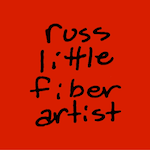Lessons from my 365: Complementary colors add definition
Let's start with a few fun facts about complementary colors:
- Two colors are said to be complements of one another if they are located opposite each other on the color wheel. For example, red and green are complementary colors.
- The complement of a primary color (red, blue, yellow) is alway a secondary color (green, orange, purple) made up of the other two primaries. For example, yellow and purple (red + blue) are complements.
- Mixing two complementary color theoretically produces a color between grey and black. In practice, it's more likely to produce a chromatic grey that will probably have some bias toward a primary or secondary.
- Of course, all of this only applies when you're dealing with what's called a subtractive color model--like mixing paint or dye. The way that your computer monitor works--additive color--is a different thing.
Knowing all that, consider the designs below. The first thing I see is contrast. And, in fact, there are no two colors more different from one another than a complementary pair. So, contrast is a powerful tool in design because it leads to definition of shapes and lines.
Another thing you can expect to find in a design that features both transparency and complementary colors is a strong values created where complements overlap and combine. These value shifts can be used to add vitality, movement, and depth to a design.






